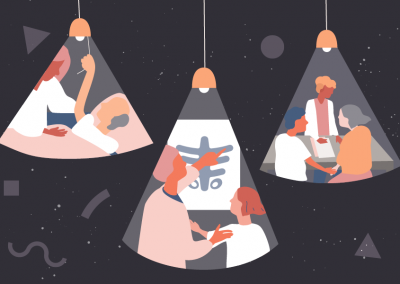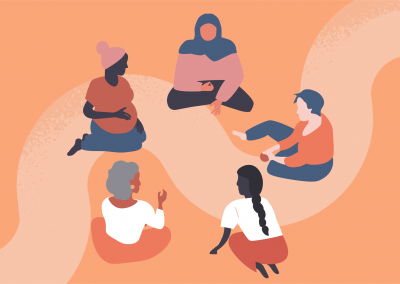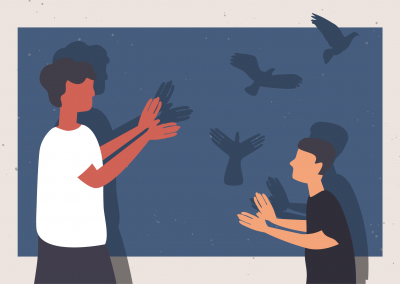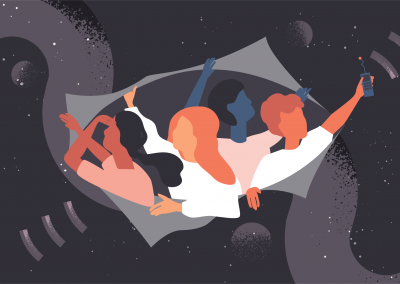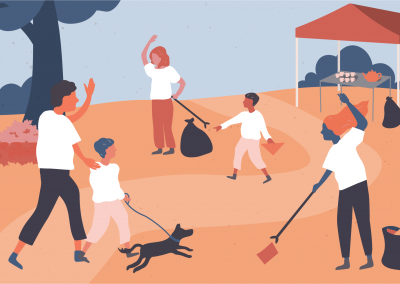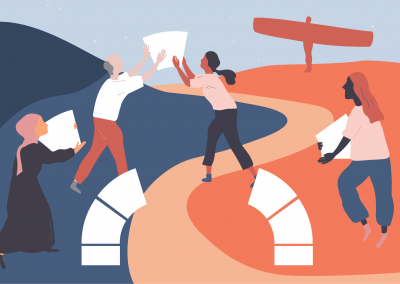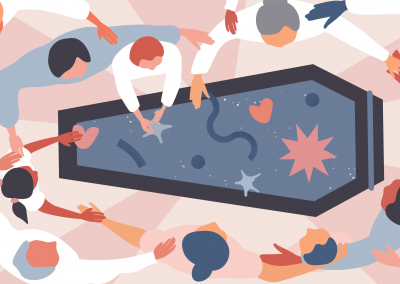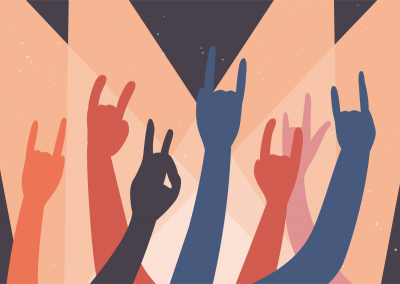Grapevine
Addressing entrenched social issues relationally not reactively
Case Maker –> Stories –> Grapevine
Note: Identifying details have been changed and, to further protect people’s identities, some characters in this story are composites of multiple individuals.
A few years ago, Coventry’s Taylor Swift fans had no way of finding one another.
Now they meet once a fortnight as the West Midland Swifties, a group of fifty devoted enthusiasts. They listen to records and discuss the latest developments in Taylor’s meteoric career.
West Midland Swifties emerged from Grapevine’s Help & Connect initiative for adults with autism and learning disabilities.
But isn’t a Taylor Swift fan club a slightly strange outcome for a community charity?
Starting with a dream
Grapevine exists to help people experiencing isolation, poverty and disadvantage in Coventry and Warwickshire.
One such person was Jackie, who is autistic, lived alone and had been repeatedly harassed by young people in her community. She felt so unsafe where she lived that she tried not to leave the house, even to pop to the shops. Jackie stayed at home and spent most of her life on her computer.
How do you support someone when they’ve reached this point? Do you send meals around to their house? Or work with the young people so they leave them alone? Instead of focusing on Jackie’s problems, a Connector from Grapevine asked her what her dream was.
Jackie’s dream was to hang out with other people who love Taylor Swift.
Collaboration station
At first, Jackie and her connector went looking for local fan groups but couldn’t find any. ‘You’ve identified something that’s missing round here,’ her connector said. ‘So let’s grow it.’
Jackie went to one of Grapevine’s Collaboration Stations – sessions where people present ideas and find potential collaborators – and shared her vision for the West Midland Swifties. Two other attendees were keen to get involved. All of a sudden Jackie was leading the development of a new community group alongside people who shared her passion.
Bit by bit, the group grew. They found a venue for their meet-ups. The members got to know one another and invited other local fans.
Now the group is thriving and Jackie has friends who look out for her and visit her house. She comes and goes and is much less vulnerable and isolated.
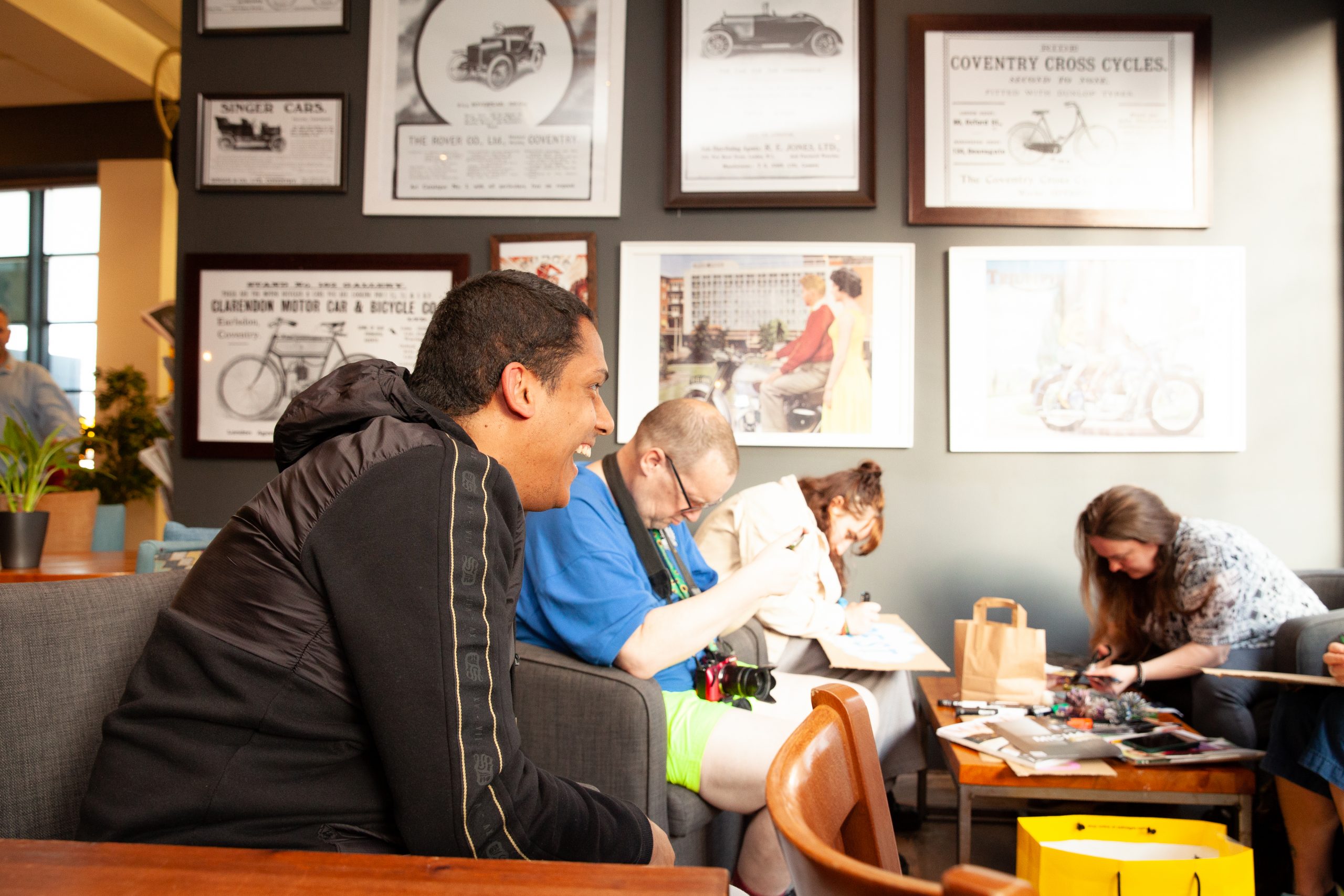
Collaboration Station. Photo credit: Dom Fleming
Cementing the why
What’s striking about this story is the way that, instead of reacting to the issues Jackie was experiencing, Grapevine began with her passions and dreams. A passion for Taylor Swift might not seem like much of a seed to work with, but Jackie’s connector spotted it and nurtured it.
‘A lot of the people we work with,’ says Naomi Madden, Grapevine’s Director of Projects, ‘their lives have remained unchanged for many, many years. Their experience of relationships is one of rejection.’
This is why, instead of arriving with a laundry list of practical steps to address their challenges, Grapevine ask people to share their dreams and start from there instead. ‘No laundry list is going to make a person feel brave enough to face their challenges,’ says Naomi. ‘We really cement the why – why are we doing this? It’s that dream that gets them on board.’
Following a dream supports individuals to step into new spaces and find meaningful local relationships. And ultimately it’s the relationships that do the work.
The issues Jackie came to us with diminished as a result of her relationships. Her life is happier, healthier and better connected. People know her for his passions and interests, not for her needs.
The long story
Jackie’s story illustrates Grapevine’s confidence that good relationships can and do resolve intractable-seeming social issues.
If people have human connections and relationships, they are healthier, safer and less likely to fall into crisis. We know that works. Ordinary human relationships and connections, that grow with individuals as their lives grow, are better able to respond to individual human need than any system possibly could
Interventions and services, ‘the things people see as help’, Naomi says, ‘are time limited and assessment based. They’re not there for the long story. Human connection is the thing that is there for the long story.’
Grapevine go beyond a service delivery relationship, focusing instead on building a sustainable network of authentic, reciprocal relationships around each individual they support.
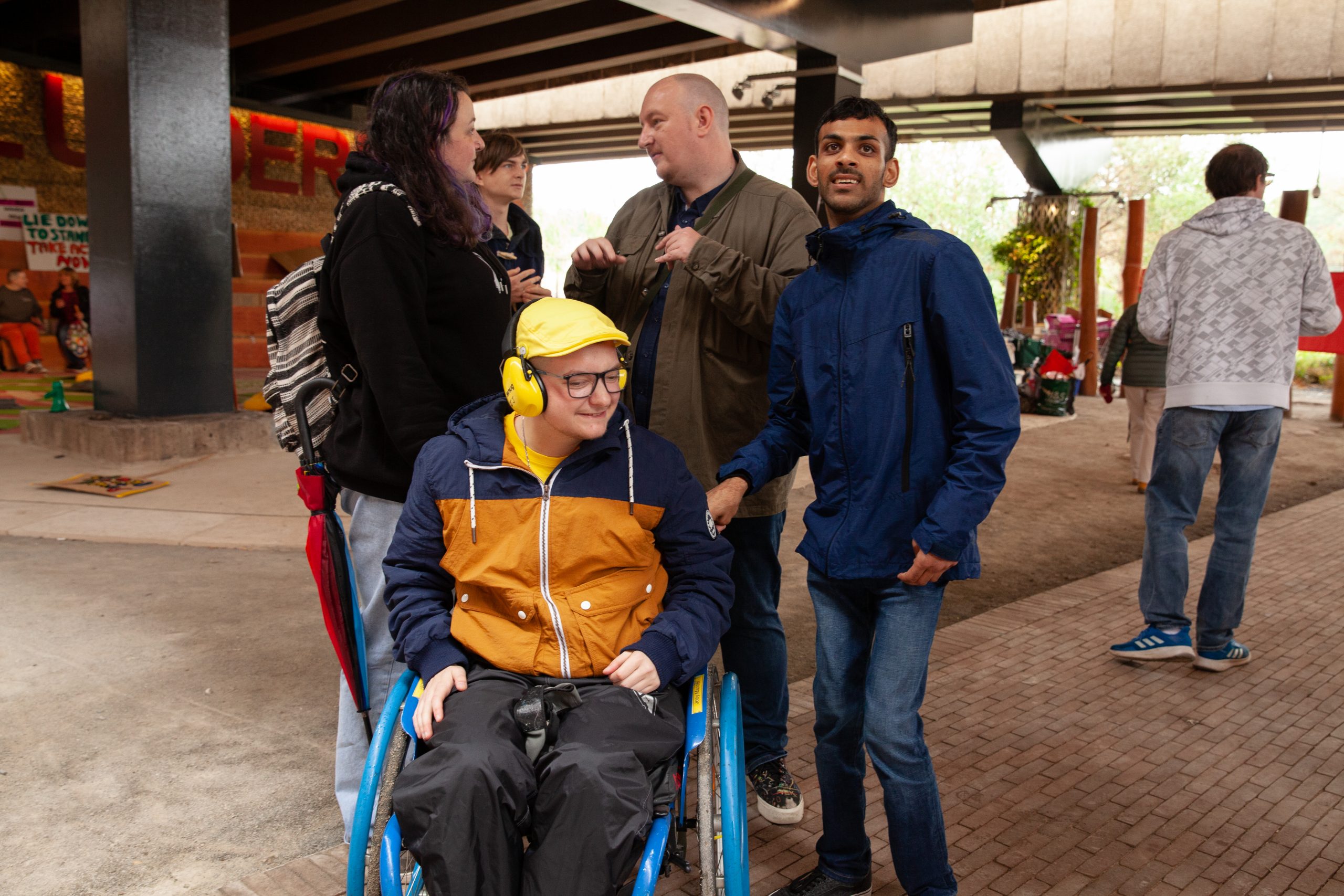
Photo credit: Dom Fleming
Beyond inclusion
A significant outcome of Jackie’s contact with Grapevine is that she’s not simply included and accepted by her community, she’s now a leader within it; she is shaping it and bringing other people together. This is because ‘inclusion’ is not Grapevine’s aim. ‘We go beyond being inclusive’, Naomi says. ‘We want people to feel purpose and leadership. The roles that make up our community, we want them to be part of that.’
This emphasis on developing purpose and leadership, rather than swooping in to solve people’s problems, reflects Grapevine’s view of their work as ‘building community power’ rather than ‘community development’. ‘With community development, people come in and do the work, and it’s good and it’s needed, but it ends,’ says Mel Smith, Grapevine’s Deputy CEO. ‘And when it ends, are people empowered enough to continue it and sort things out for themselves?’ Grapevine’s Change Maker University fosters this community power and leadership, along with the webs of relationships to embed and sustain the changes people want to make.
Walking alongside communities
For Mel, one of the biggest challenges is working within a wider system that views people as ‘recipients’ of services and, in the process, habituates communities to the idea ‘that they don’t have the power to do stuff.’
By building good relationships with local services, Grapevine is trying to change the wider system, using their relational work as a model and ‘a form of experiential learning for people working in that system’ says Mel. ‘We’re trying to take people who think they can’t behave this way on the same journey.’ This includes ‘getting people out of the boardroom to walk alongside local people.’ On Grapevine’s ‘Walk and Talks’, people working in local services go for a walk around the city with some of the people they’re serving, hearing their stories and ideas along the way.
Creating meaningful ways to listen to local people is a core part of Grapevine’s work, whether that involves setting up a temporary park in a busy civic space or spending a lot of time on buses. ‘We wanted to speak to older people,’ says Mel, ‘and we knew a lot of older people take public transport. So we did a listening campaign sitting on local buses.’
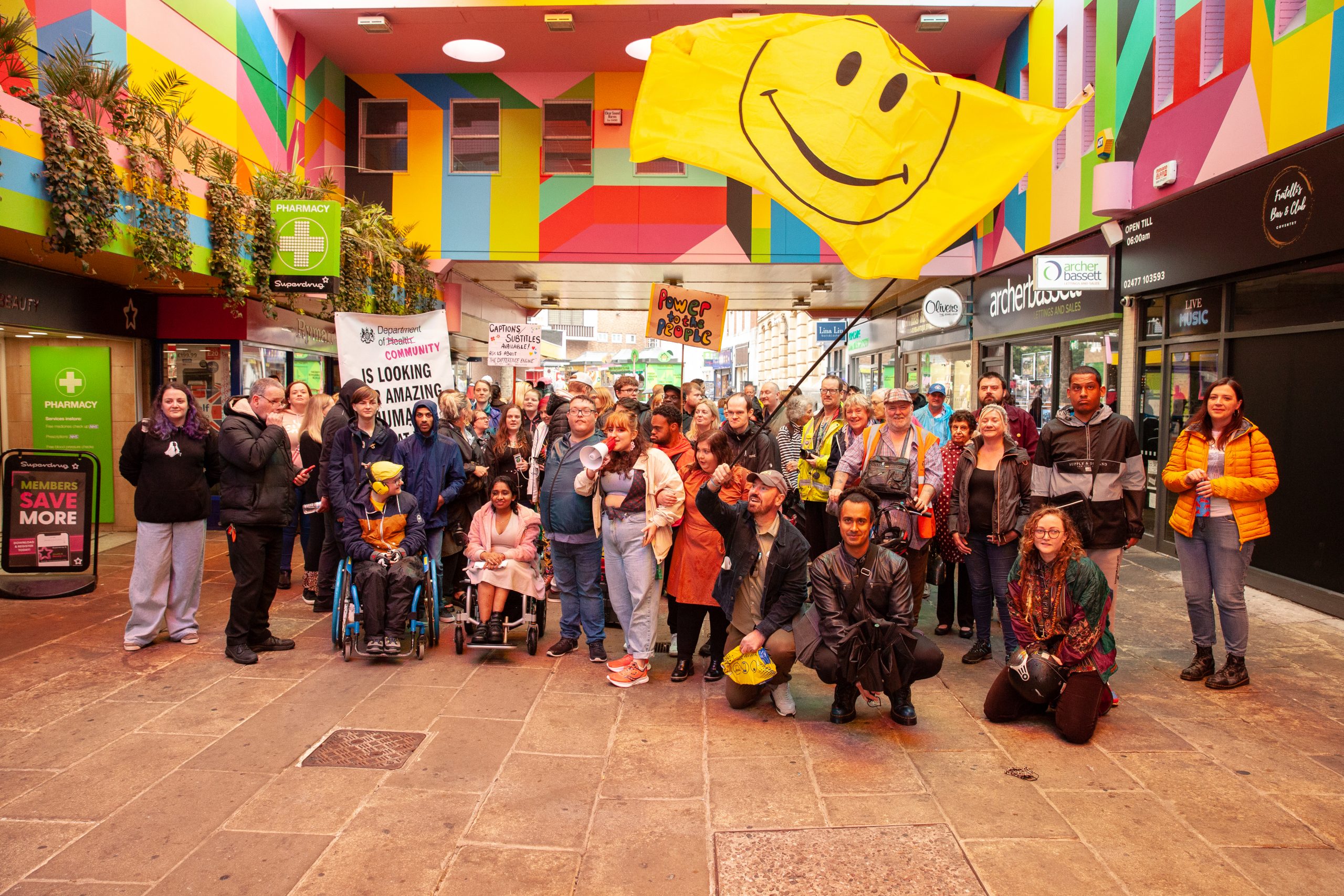
Photo credit: Dom Fleming
Relationships rather than fixes
In everything they do, Grapevine start with relationships rather than fixes. Naomi describes the radically different outcomes this can produce. ‘We supported someone who was hoarding,’ she says. ‘Social services referred her to us. Her house was full of stuff. It was a fire hazard and, still, she was constantly getting stuff delivered and would never get rid of anything. What’s more, her bins were overflowing with rubbish and packaging, but she never put the bins out. So her front yard was also full of stuff – and the neighbours didn’t like that at all.’
‘The thing is,’ Naomi says, ‘she was agoraphobic: so fearful that she wouldn’t put her bin out on the street. And so one of the first things our team member did was to talk to her neighbours, and say Look, if she hasn’t put the bin out, can you help her? And that was a bit of a turning point. It shifted from the neighbours waiting for services to solve that problem, to thinking Actually we can help solve that problem. Eventually we introduced her to a couple of her neighbours and then, one day, without warning, she put the bin out herself.’
‘Now, it doesn’t sound like much, but that was a huge step. And then, every week, she gradually started clearing the stuff. Alongside that, people on her street started saying hello to her, which all of a sudden opened up the possibility of friendship, feeling part of a neighbourhood. She started to go out a bit – not far, but she started leaving the house. And eventually she cleared it. It took ages, but she cleared the house. And if the hoarding starts to happen again, hopefully the people who first come to support will be her neighbours.’
If you look at that problem on paper, your first point wouldn’t be to go to the neighbours, your first point would be to get a skip. And that’s the difference with a relational approach.
How are social services supposed to fix all these problems?
We use the power of relationships to tackle big social issues.
Reflection questions
Digging deeper
- What difference did putting relationships first make in this example?
- How might a relationships first approach impact surrounding services and systems?
- How does having good relationships relate to knotty social issues like isolation, exclusion and mental ill health?
Applying the learning
- How might you address a challenge differently in your context by putting relationships first?
- What would it mean for you to think in terms of relationships being there for the ‘long story’ in your context?
More stories
The Relationships Map
The Relationships Map is a space for anyone who believes in the importance of relationships to find one another, share ideas and resources, feel part of something bigger, and realise more than the sum of our parts.

